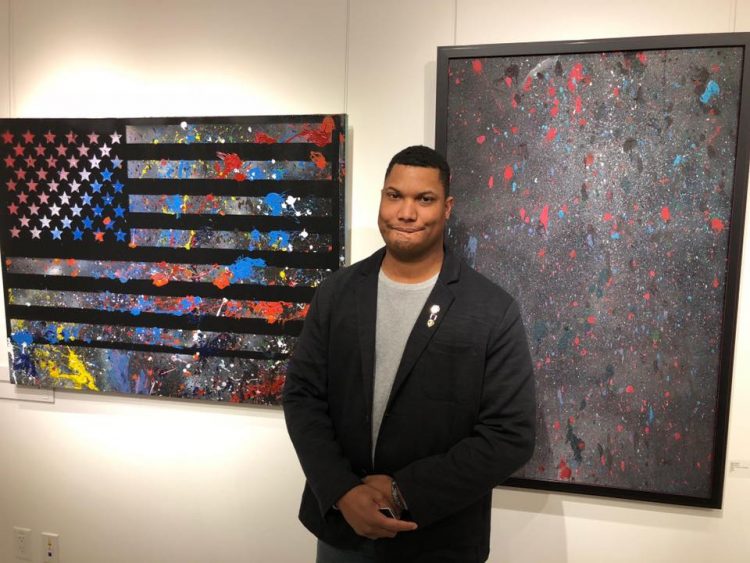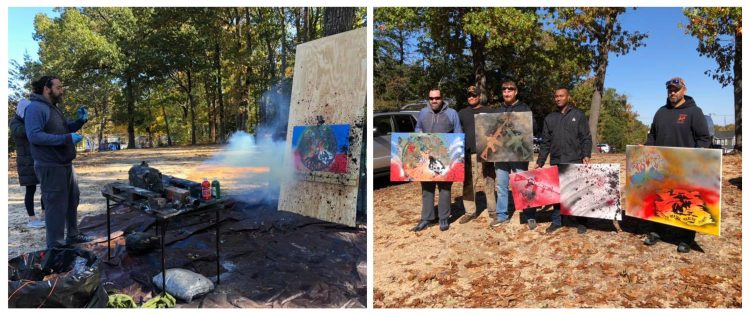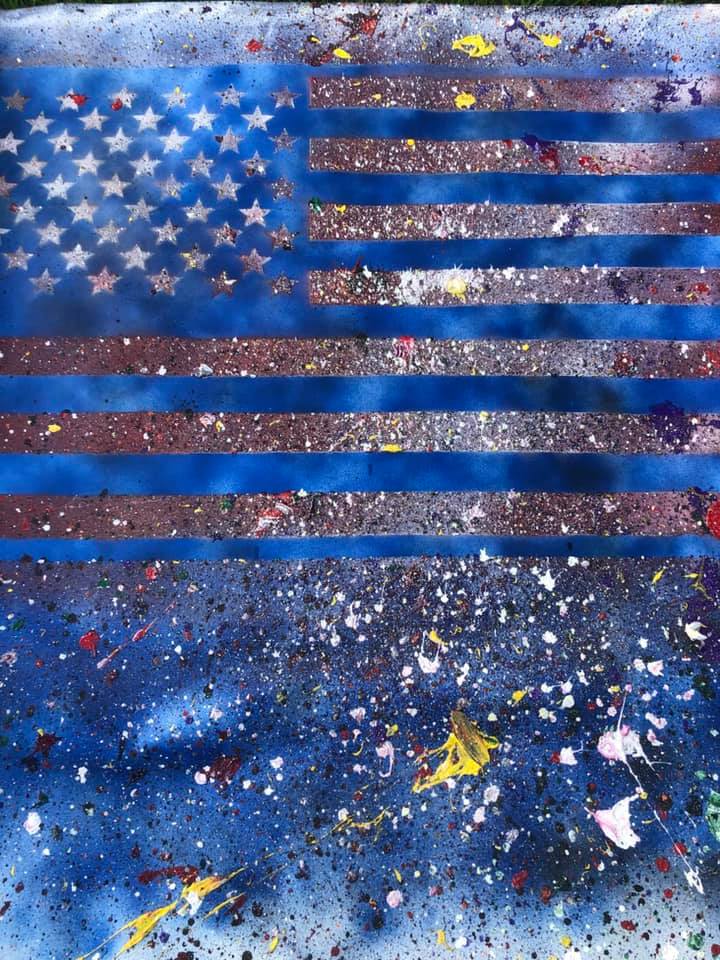On Thursday, November 14, join The Phillips Collection and the University of Maryland for “Artists of Conscience: Veterans, Art & Wellness,” a conversations about the impact that art and art therapies can have on the lives of veterans with post-traumatic stress disorder (PTSD), traumatic-brain injury (TBI), and other combat-related psychological health conditions.
Army Sgt. Zach Herrick, Purple Heart Recipient and Founder of American Heroes HeART, is one of the speakers. He shares with us how art has helped him recover and heal from his trauma.

Zach Herrick with art created through American Heroes HeART
Walk us through your thought process in starting American Heroes HeART.
It was simple: I wanted to give back to the veteran community that has helped me through my recovery. Through the creative arts, I wanted to encourage other veterans to try something out of their comfort zone. On June 25, 2011, I was shot in the face in Afghanistan. After getting injured, during my recovery at Walter Reed, art became a major factor in my rehabilitation. I soon discovered a new and unique form of art called Explosive Art or Infantry Art, created with paint cannons. This helped project mine and other’s emotions onto the canvas. The externalization of emotion, controlled distance creation and a visual trauma narrative enables us to take control: each painting is as unique as the story of the veteran who created it.

Creating Explosive Art
During your rehabilitation, were you surprised that making art was a part of your recovery?
I was surprised that it worked for me. I wouldn’t say that I have any natural ability in the conventional sense—I think that I’m more of a wellness artist. However, I have gotten so much out of art and now understand that you need to have 360-degree awareness. I knew early on in my recovery that I couldn’t use the same tools that I did as a War-fighter in Afghanistan to help me heal (rucking, shooting, even combatives), as those don’t really translate as well as art, meditation, or yoga. Even just understanding that helped me recover.
What would you tell a veteran that is hesitant to the benefits of art therapy?
Just try it, you have nothing to lose and all to gain. I wouldn’t say it’s for everyone, just like any other therapy. I think it depends on what you’re seeking to get out of it and where you are in your recovery process, that may play a big role. Also, don’t be afraid to try something new that could possibly benefit you—I think as combat-wounded veterans, we often get categorized or stereotyped as this gun happy, tobacco spitting, glasses wearing, angry bearded man, but we’re much more than just “America’s War-fighter.”

Creating Explosive Art
Why abstract art?
To me, abstract art is a way to express emotion without the limitations of reality. It can serve as a good way for someone to interpret what’s going on inside their soul without having to attempt to represent an accurate portrayal of visual reality; instead, we can use shapes and colors. I think it’s perfect for someone like me and the veterans I want to engage with. Also, there is something about abstract art that feels less threatening than having to draw a straight line.

Art created through American Heroes HeART
What do you hope to accomplish at this forum? What message are you trying to get out there?
I want to get the word out about what we do, how we do it, and the importance of why we do it. Some say that beauty is in the eye of the beholder; well, I want people to see how something that caused so much damage can be repurposed, that it can be flipped on its head and used for good and beauty. I want people to rethink what art and exposure therapy is and what it means to them. I want to start a dialogue of what that therapy looks like in different settings with different people.
In the past, art therapy researchers have found correlations between the level of trauma a veteran reports and the subject of what they create (through the medium of masks). What trends do you see in the art veterans create with you and their trauma?
As someone who made one of those masks I think most veterans express a lot of pain, darkness, and sometimes hopelessness—the mask could be their true face. Similar to when we create Explosive Art, people tend to pick dark colors: black, dark red, orange, grey, sometimes a splash of white for hope mixed in the gunpowder. The colors let you see and hear their raw emotions. Trauma is trauma and I think there is a misconception that we put some veterans over others, but everybody carries their own form of demons. Ranking it is not good and a healthier prospective outlook might show a better balance.
Join us on November 14 to hear from Zach Herrick and other veterans on the healing powers of art.
